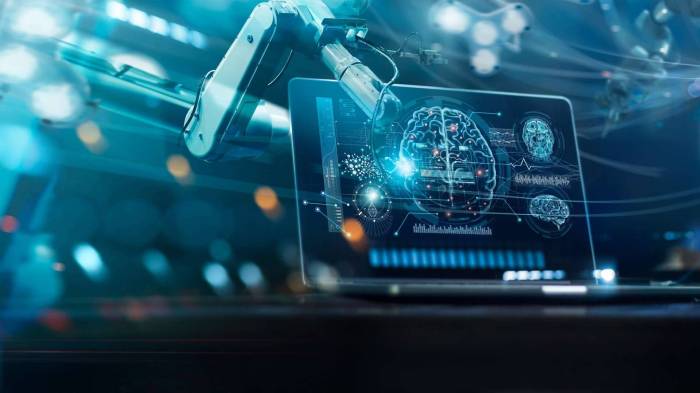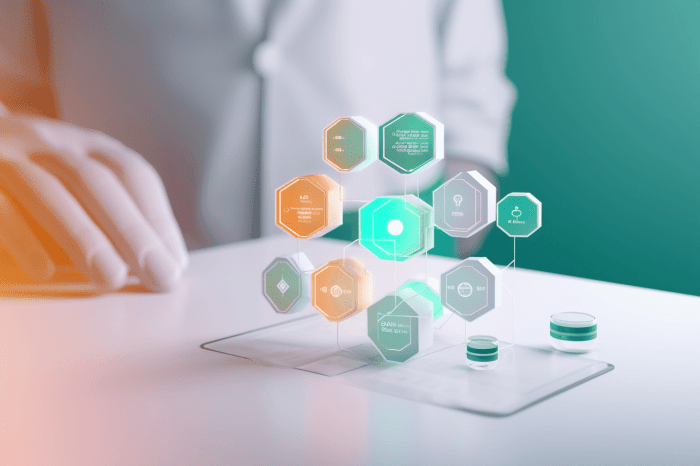Tech Innovations That Are Changing Global Healthcare: A Revolution in Patient Care
Exploring the realm of Tech Innovations That Are Changing Global Healthcare unveils a landscape where cutting-edge technologies are reshaping the way we approach healthcare on a worldwide scale. From telemedicine to artificial intelligence, these innovations are paving the path for a future where healthcare is more accessible, efficient, and impactful.
As we delve deeper into this discussion, we will uncover the key areas where technology is making a significant impact in healthcare, along with examples of groundbreaking technologies that are at the forefront of this transformative journey.
Overview of Tech Innovations in Global Healthcare
Technology has been a game-changer in the field of healthcare, revolutionizing the way medical services are delivered and improving patient outcomes worldwide. From cutting-edge devices to advanced software solutions, tech innovations are reshaping the healthcare landscape in significant ways.
Key Areas of Impact
- Telemedicine: Telehealth services have enabled remote consultations, monitoring, and diagnosis, expanding access to healthcare in underserved areas.
- Artificial Intelligence (AI): AI algorithms are being used for early disease detection, personalized treatment plans, and predictive analytics to enhance patient care.
- Robotics: Surgical robots are transforming minimally invasive procedures, improving precision, reducing recovery times, and enhancing surgical outcomes.
- Internet of Things (IoT): Connected devices and wearables are facilitating real-time health monitoring, data tracking, and preventive care strategies.
Examples of Cutting-edge Technologies
- 3D Printing: Customized prosthetics, implants, and organs can be created using 3D printing technology, offering tailored solutions for patients.
- Blockchain: Secure and transparent health records management through blockchain technology ensures data integrity, privacy, and interoperability.
- Virtual Reality (VR) and Augmented Reality (AR): VR and AR applications are revolutionizing medical training, pain management, and therapy for patients with various conditions.
- Genomics and Precision Medicine: Genomic sequencing and personalized medicine approaches are revolutionizing treatment strategies based on individual genetic profiles.
Telemedicine and Remote Patient Monitoring

Telemedicine and remote patient monitoring are revolutionizing the healthcare industry by providing more accessible and efficient ways to deliver care to patients worldwide.
Benefits of Telemedicine:
- Increased access to healthcare services for underserved populations in remote areas.
- Reduced healthcare costs for both patients and providers by eliminating the need for in-person visits.
- Improved patient outcomes through continuous monitoring and timely interventions.
Innovative Telemedicine Platforms and Devices:
- Telehealth apps that allow patients to consult with healthcare providers via video calls or messaging.
- Remote monitoring devices such as wearable sensors that track vital signs and transmit data to healthcare professionals in real-time.
- Virtual reality technology used for tele-surgery and medical training programs.
Artificial Intelligence and Machine Learning in Healthcare
Artificial Intelligence (AI) and Machine Learning technologies are revolutionizing the healthcare industry by enhancing diagnostics and treatment processes. These advanced technologies have the potential to significantly improve patient outcomes and streamline healthcare delivery.
Utilization of AI in Healthcare
AI is being utilized in healthcare to analyze complex medical data, identify patterns, and make accurate predictions. Machine Learning algorithms can process vast amounts of patient information to assist healthcare professionals in diagnosing diseases, creating personalized treatment plans, and predicting potential health risks.
- AI-powered diagnostic tools: AI algorithms can analyze medical images, such as X-rays and MRIs, to identify abnormalities and assist radiologists in making accurate diagnoses.
- Personalized treatment recommendations: Machine Learning algorithms can analyze patient data to recommend personalized treatment plans based on individual characteristics and medical history.
- Predictive analytics for patient outcomes: AI technologies can analyze patient data to predict potential health risks and outcomes, allowing healthcare providers to intervene early and improve patient care.
Comparison with Traditional Healthcare Practices
When compared to traditional healthcare practices, AI-driven solutions offer increased efficiency and accuracy in diagnostics and treatment. AI technologies can process data at a much faster rate than human professionals, leading to quicker and more precise diagnoses. Additionally, AI algorithms can continuously learn and improve over time, enhancing the quality of care provided to patients
- Efficiency: AI can analyze large datasets in a fraction of the time it would take a human, leading to faster diagnoses and treatment decisions.
- Accuracy: AI algorithms can detect subtle patterns and abnormalities that may be overlooked by human professionals, resulting in more accurate diagnoses and treatment plans.
- Continuous learning: Machine Learning algorithms can adapt and improve based on new data, ensuring that healthcare practices remain up-to-date and effective.
Significant AI Applications in Healthcare
AI applications in healthcare are driving significant improvements in patient care and outcomes by revolutionizing various aspects of the healthcare industry.
- Virtual Health Assistants: AI-powered chatbots and virtual assistants can provide patients with personalized health information, schedule appointments, and answer medical queries.
- Drug Discovery: AI algorithms can analyze molecular data to accelerate the drug discovery process and identify potential treatments for various diseases.
- Predictive Analytics: AI technologies can predict patient outcomes, hospital readmissions, and disease progression, allowing healthcare providers to intervene proactively.
Wearable Health Tech and IoT Devices
Wearable health technologies and IoT devices are revolutionizing the way healthcare is delivered, allowing for more personalized and proactive approaches to wellness.
Role of Wearable Health Technologies
Wearable health technologies play a crucial role in promoting preventive healthcare and wellness globally by providing individuals with real-time data about their health status. These devices can track various health metrics such as heart rate, activity levels, sleep patterns, and even blood sugar levels, empowering users to make informed decisions about their lifestyle and health habits.
- Fitbit: Fitbit is a popular wearable device that tracks activity levels, sleep patterns, and heart rate, encouraging users to stay active and maintain a healthy lifestyle.
- Apple Watch: The Apple Watch includes features like ECG monitoring and fall detection, making it a valuable tool for monitoring heart health and safety.
- Oura Ring: The Oura Ring tracks sleep quality, activity levels, and readiness, providing users with insights to optimize their health and well-being.
Impact on Healthcare Industry
The integration of wearable health tech into the healthcare industry has the potential to improve patient outcomes, reduce healthcare costs, and enhance overall efficiency. Healthcare providers can access real-time data from patients wearing these devices, allowing for remote monitoring and early intervention when necessary.
This shift towards proactive and personalized care is transforming the traditional healthcare model, leading to improved patient engagement and satisfaction.
Potential for Future Growth and Innovation
As wearable health technologies continue to evolve, we can expect to see further innovations in the healthcare industry. The use of AI and machine learning algorithms to analyze the vast amounts of data collected from these devices will lead to more accurate health predictions and personalized treatment plans.
The growth of wearable health tech and IoT devices opens up new possibilities for remote patient monitoring, telemedicine, and preventive care, shaping the future of healthcare delivery worldwide.
Final Wrap-Up

In conclusion, the landscape of global healthcare is rapidly evolving thanks to these tech innovations. From telemedicine to wearable health tech, each advancement is propelling us towards a future where healthcare is not just reactive but proactive, personalized, and precise.
Embracing these technologies is not just a choice but a necessity in ensuring a healthier world for all.
FAQ Section
How are tech innovations transforming global healthcare?
Tech innovations are revolutionizing global healthcare by improving accessibility, efficiency, and patient outcomes through advancements like telemedicine, AI, and wearable health tech.
What are some examples of cutting-edge technologies in healthcare?
Examples include AI-driven diagnostics, remote patient monitoring devices, and IoT wearable devices that empower individuals to manage their health proactively.
How does telemedicine impact healthcare services globally?
Telemedicine enhances healthcare delivery by enabling remote consultations, monitoring, and access to medical expertise, especially in underserved areas.



